Take you to see 16 different types of MBTI famous artists of all time
Have you ever had the experience of being inexplicably attracted by an artist's painting and stopped for a long time?
Artists' works can express their feelings, and they can also affect the viewer's innermost feelings. This kind of empathy cannot be expressed in words. Anyone can be an artist, and people with different personalities are often attracted to different symbolic images , which can be a color or a figure. And this innate intuition is more like a subconscious "smell".
The following introduces profiles and their works from 16 different types of artists in MBTI. After reading it, you can correspond to the works of the same type of artist as you, and see if it can resonate? Haha, this seems like an interesting experiment!
The artist order is as follows :
- Salvador Dali/ENFP
- Leonardo da Vinci/ ENTP
- Vincent van Gogh/INFP
- JMW Turner / INTP
-Henri Matisse/ENFJ
-Claude Monet/ENTJ
-Odilon Redon/INFJ
-Arnold Böcklin/INTJ
-George Hughes/ESFJ
-Emanuel Leutze/ESTJ
- Frederic Remington / ESFP
—John James Audubon/ESTP
-Winslow Homer/ISFP
—Georgia O'Keeffe/ISTP
- Norman Rockwell/ISFJ
-Edward Hopper/ISTJ
ENFP - Salvador Dali

Personality Traits: ENFPs are "candidate" personalities, they are truly free spirited people. They are charismatic, independent, energetic and compassionate, warm, charismatic and creative types. ENFP personality has a strong independence, which makes them yearn for freedom more than ordinary people, and they are easily attracted by new people and things. They are always energetic, so they are also very creative, and they like original things and things. Ideas, adventurous, dislikes and is not good at dull and repetitive tasks.
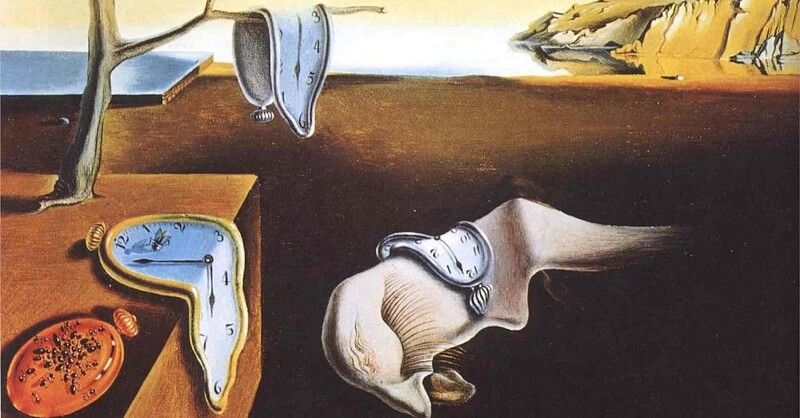
Salvador Dali, born in Catalonia, Spain, was a 20th century surrealist painter, sculptor and printmaker of extraordinary talent and imagination. Known for exploring the eerie dreams of the subconscious, his artwork is closely related to Freud's psychoanalysis , capturing the madness deep within the human psyche and visualizing it through a paintbrush. In addition to his crazy creations, he can have such a huge achievement, and it is also inseparable from his eccentric personality and behavior. For example, he often recorded the surreal images he dreamed in the form of sketches . He also used some abnormal methods (such as standing on his head for a long time) to force himself into a state of self-induced paranoia . Between half-dreaming and half-awake, his crazy imagination would be combined to achieve the best creative state, but he also repeatedly denied himself He used drugs to achieve this purpose, and he said aggressively: I don't abuse drugs, I am a drug.
This crazy state makes him often juxtapose the irrelevant and illogical things in the picture to express the absurdity of the inner world. His works often intervene in a bizarre or alternative external objective world, and reflect his subconscious picture in the way of decomposition, combination, overlap and interlace. For example, one of his most famous works - "The Eternity of Memory", also known as "Soft Clock" , Dali made the impossible in reality vivid on the paper, such as the empty beach, the monster like a horse and a horse, the dead tree, Twisted clock. And the most amazing thing is that several clocks in this painting have become soft and malleable things, they are floppy, or hang on branches, or on platforms, or drape over monsters. On the back, it gives people a feeling of powerlessness, expressing Dali 's desperation for the collapse of his personal world under the oppression of contemporary life .
"Surrealism is destructive, but it only destroys what it sees as the shackles that limit our vision." - Salvador Dali
ENTP - Leonardo da Vinci

Personality Traits: ENTPs are "debater" type personalities. They are extremely curious. When receiving new information, they will observe things from multiple perspectives, and have the courage to express their opinions and challenge existing traditional conventions. They are innovative, smart and expressive. Known for being thoughtful and oriented, which is why this personality type is described as an innovator, visionary, and debater.
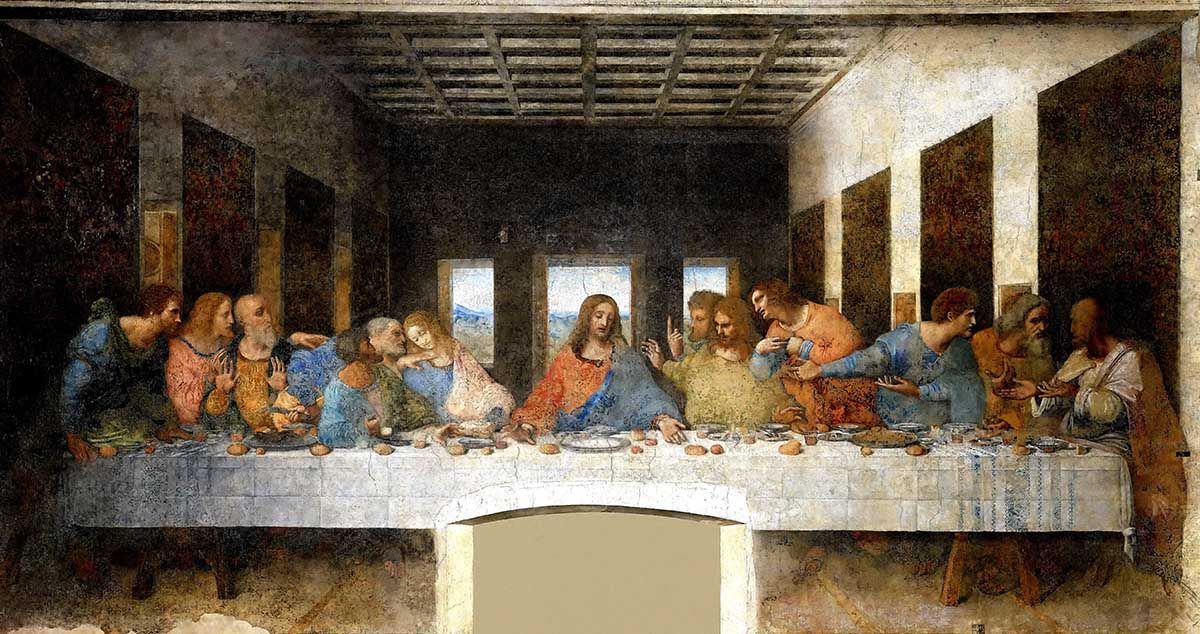
Leonardo da Vinci was a polymath, one of the three post-Renaissance masters. He is constantly experimenting with new themes in art and experimenting with different fields of discipline and in different mediums, for example, fluently blending mathematical theory with psychological themes and anatomical realism . He tries to try and understand new possibilities and unforeseen potentials in the world. For example, he also has research and outstanding contributions in the fields of civil engineering, chemistry, geology, geometry, fluid dynamics, mathematics, mechanical engineering, optics, physics, pyrotechnics and zoology , although the verification data of all his scientific research until It has only been recognized in the past 150 years, but his surviving manuscript is about 6,000 pages long. One of Leonardo da Vinci's greatest achievements in his life was painting, and his masterpieces such as "Mona Lisa" and "The Last Supper" reflect his superb artistic skills.
This work is a fresco on the dining room of the Santa Maria monastery. It was created during the Italian Renaissance. The painting is cleverly conceived, rigorously laid out, and partially depicted in nuanced detail. It is Leonardo da Vinci's most famous work. It is based on Christian myths and stories, from the twenty-sixth chapter of the New Testament, the Gospel of Mark . In the composition, Leonardo da Vinci let the characters take Jesus as the center, lined up and divided into four groups . This composition makes the picture show the beauty of symmetry, harmony and balance, and reflects the artistic principle of "diversity and unity". . The details of this painting vividly show the demeanor, posture and character of the disciples, expressing the religious spirit of sublime, dedicated and compassionate. The characters in the picture are also exactly the same as the legendary "Twelve Apostles of Jesus", and the postures, expressions and gestures of each character are completely different, giving the viewer an immersive feeling.
"Art is never finished, but abandoned. - Leonardo da Vinci
INFP – Vincent Van Gogh

Personality Traits: INFPs are mediator personality types and idealists. People of this type tend to be introverted, idealistic, and creative. Prefers to observe things around you in an abstract, visionary and imaginative way. It is necessary for them to understand themselves and their surroundings, and they project themselves into the work to express these ideas, and are very good at expressing themselves, using metaphors and fictional characters to express their beauty and mystery.
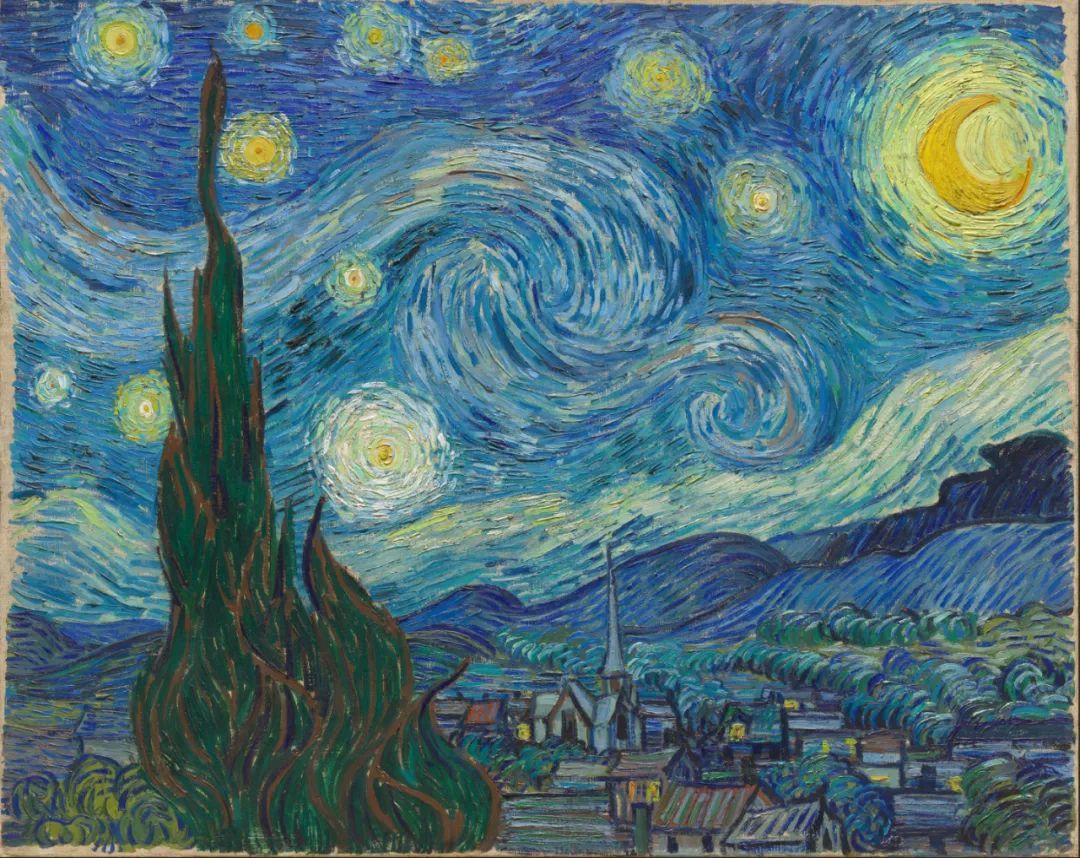
For Van Gogh , painting was an expression of his innermost being and soul. He was a true idealist, and his paintings conveyed the love of the oppressed as a way to maintain his own authenticity and values, and to live the kind of life he aspired to. He is known to be quiet, thoughtful and imaginative. But sadly, in his short life, he suffered a lot of despair and misunderstanding.
His introverted personality shaped his rich inner world and established his unique personal style. Van Gogh eschewed traditional painting techniques and instead created from his imaginative and passionate emotions. His lush, brushstrokes of dots and lines capture the creativity and depth of thought that the INFP personality possesses.
“I threw myself into my work with all my heart and lost my mind in the process. – Vincent Van Gogh
INTP – Joseph Mallord William Turner — JMW Turner
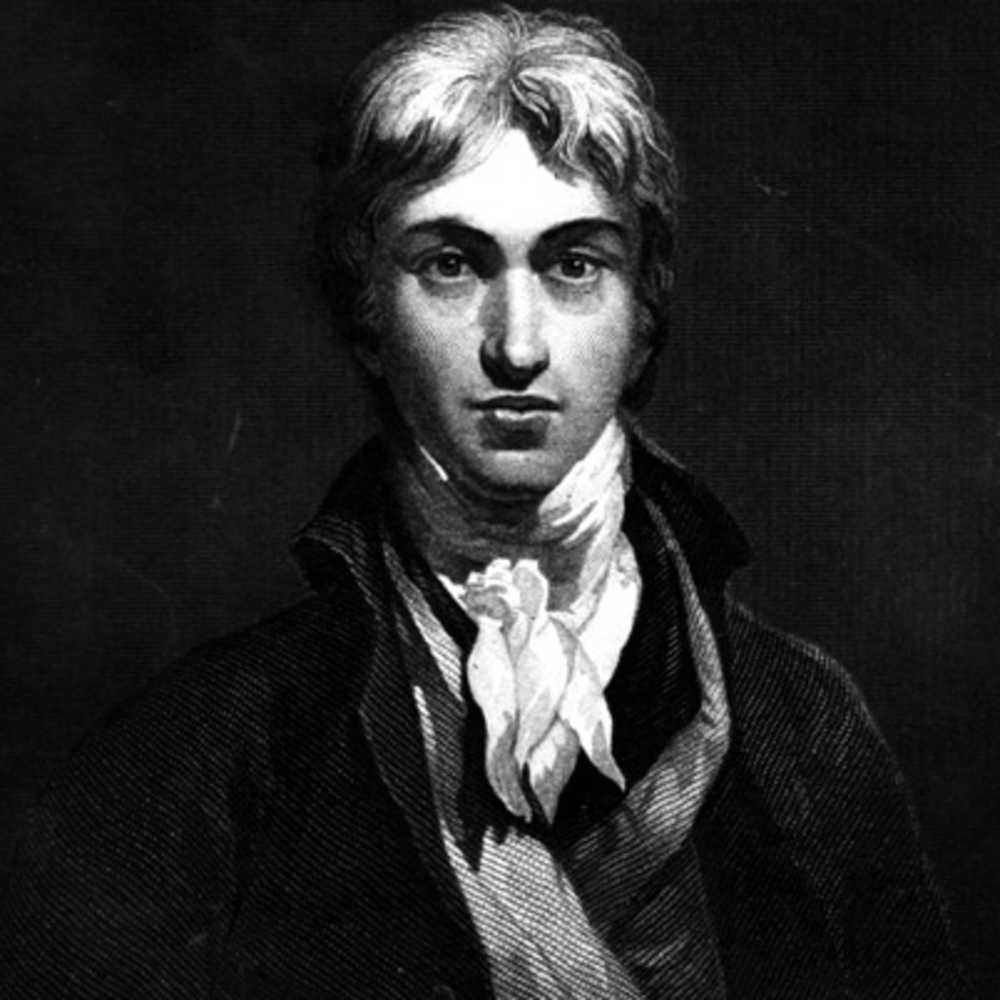
Personality characteristics: INTPs are "logician" personalities, they are quiet and like to analyze everything. They enjoy spending time alone, thinking about how things work, and coming up with solutions to problems. INTPs have strong curiosity and strong analytical skills, so when they encounter problems, they will actively seek the root cause and think in a different way from ordinary people. However, INTPs are more introverted, and they are better at expressing their emotions by writing than by speaking, giving them a rich inner world, preferring to focus on their inner thoughts rather than the outer world.
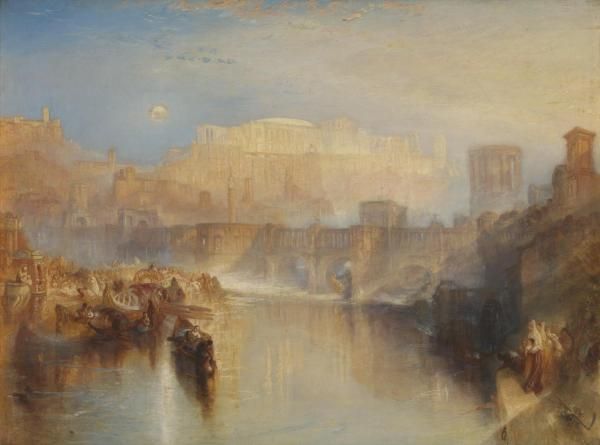
Turner was a shy man who possessed an unconventional form of art painting. He used to hang blank canvases at the prestigious Royal Academy exhibition, and when the show opened, he improvised a work in public. He believed that he could process and create within a certain limited period of time, and although his method may seem random and disorganized to others, it is undeniable that, at the time, this ingenious way of painting, In fact, it is rooted in his solid professional painting knowledge and skills . According to Turner's biography by James Hamilton, he "splattered and squandered different colors on the paper until an image appeared, and this final image expressed the immersion in his mind. the idea of an environment scenario".
"If I could find something darker than black, I would use it". – JMW Turner
ENFJ – Henri Matisse
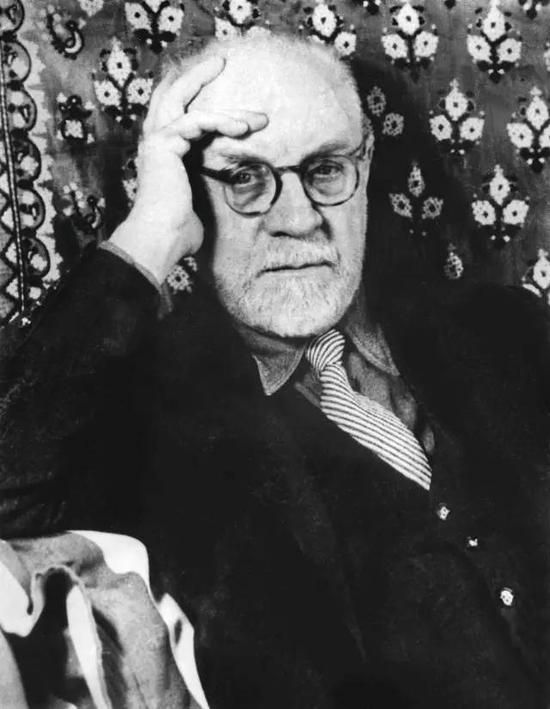
Personality Traits: ENFJs are often "protagonist" personalities, seen as warm, outgoing, loyal, and sensitive. They are natural leaders, passionate and charismatic. They exude a natural self-confidence, and they themselves draw pride and joy from it.
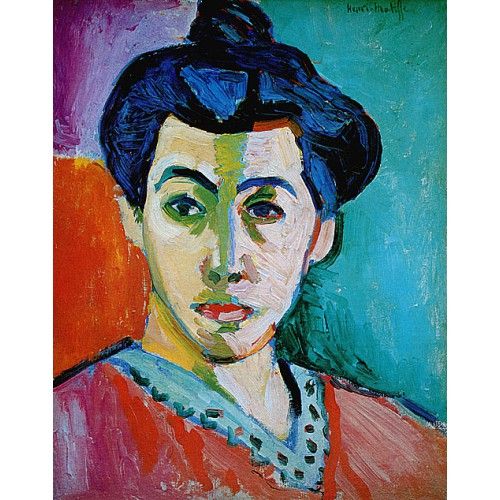
Henri Matisse grew up in Picardy-en-Vermandois, Picardy, France. He is the greatest painter of the twentieth century who is good at using color, the founder and main representative of Fauvism, and a sculptor. Home and printmaker. He and Picasso are the two most important painters of the 20th century and the leading figures of Fauvism. He went to Paris in 1887 to study law, and after graduation he returned to his hometown as a magistrate of the magistrates. His original life had nothing to do with art. However, at the age of 20, one thing changed his life. He began to paint for the first time during a bout of appendicitis and found the joy in it "as in heaven", so he set out to become an artist. Matisse experimented with a variety of styles and techniques throughout his long life. He was initially fascinated by the Neo-Impressionist style , borrowing and adapting content from other painters, times and cultures, constantly exploring methods of painting that satisfied him.
The Green Stripe (La Raie Verte), also known as Portrait of Madame Matisse. It is Matisse's portrait of his wife, Emily Noelie Matisse-Parel . This is an oil on canvas, completed in the autumn or winter of 1905. Matisse tried to create a sense of light, shadow and volume without the use of traditional shadows, using flat blocks of contrasting colors instead of the traditional techniques of using light and shade to create layers.
In this painting, a striking green stripe runs through the center of her wife's face. When the painting was exhibited in Paris in 1906, the works were mocked as being created by beasts. Because this colorism was astounding at the time, it used bold and flat colors, informal lines, playful structures, and vibrant colors. This romantic and intentionally shocking rebellious approach appeared in many of the early Fauvism works, which made the figures in this painting have a cold expression and a deep psychological insight.
ENTJ – Oscar-Claude Monet
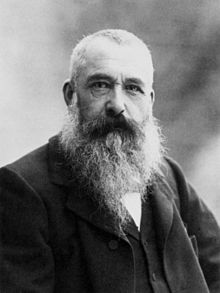
Personality Traits: ENFJs are "commanders", confident and outspoken. They prefer to think about the future rather than focus on the here and now. If there's one thing ENTJs love, it might be magic, but no matter how big or small the challenge, they firmly believe that, given enough time and resources, nothing is impossible to achieve.
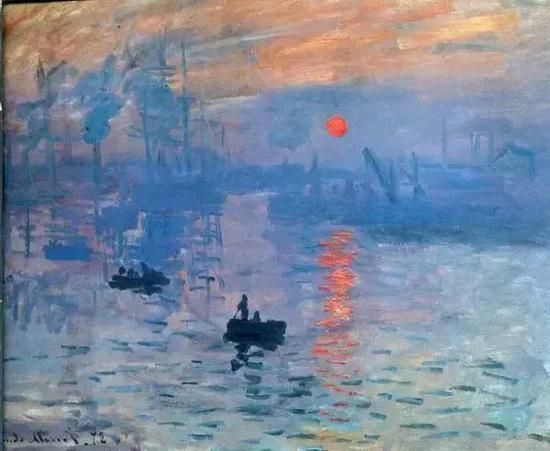
Oscar-Claude Monet (Oscar-Claude Monet) , French painter, one of the representatives and founders of Impressionism, the word "impression" comes from his famous work "Impression Sunrise", this painting overthrew Traditional art rules, creating a new style of painting. At that time, most artists focused on depicting the light on the water surface, but Monet went further and finally completed Panorama of Water Lilies. His use of color is quite delicate, and the original 'color segmentation method' makes Monet's "Water Lilies" feel like the overlapping of light and shadow, like a dream. This is because the colors above are independent of each other, and the pigments have not been reconciled. This is to maintain the brightness of the colors. The most important thing is the use of small brushstrokes. They are independently and densely arranged in the painting. Make people's visual system produce 'visual mixing' , so as to achieve the effect of color harmony . For a long time, he has insisted on depicting the same object or the same scene in different time and light, in order to explore the fusion of experimental color and light and record the changing and passing of seasons.

His friend Monceau (French politician and future Prime Minister Georges Clemenceau) encouraged him to pick up several flower paintings that he had abandoned halfway through a few years earlier. Because just a few months before he completed his famous work (the Water Lily series), Monet experienced the pain of the death of his wife and children, and his mood was too low to create. In a letter to an art dealer in 1914, he wrote: "I work hard to create, and I paint in spite of wind and rain." Even though Monet's mood and mood at the time were close to rock bottom, he unexpectedly insisted on completing this world-famous painting - "Water Lilies".
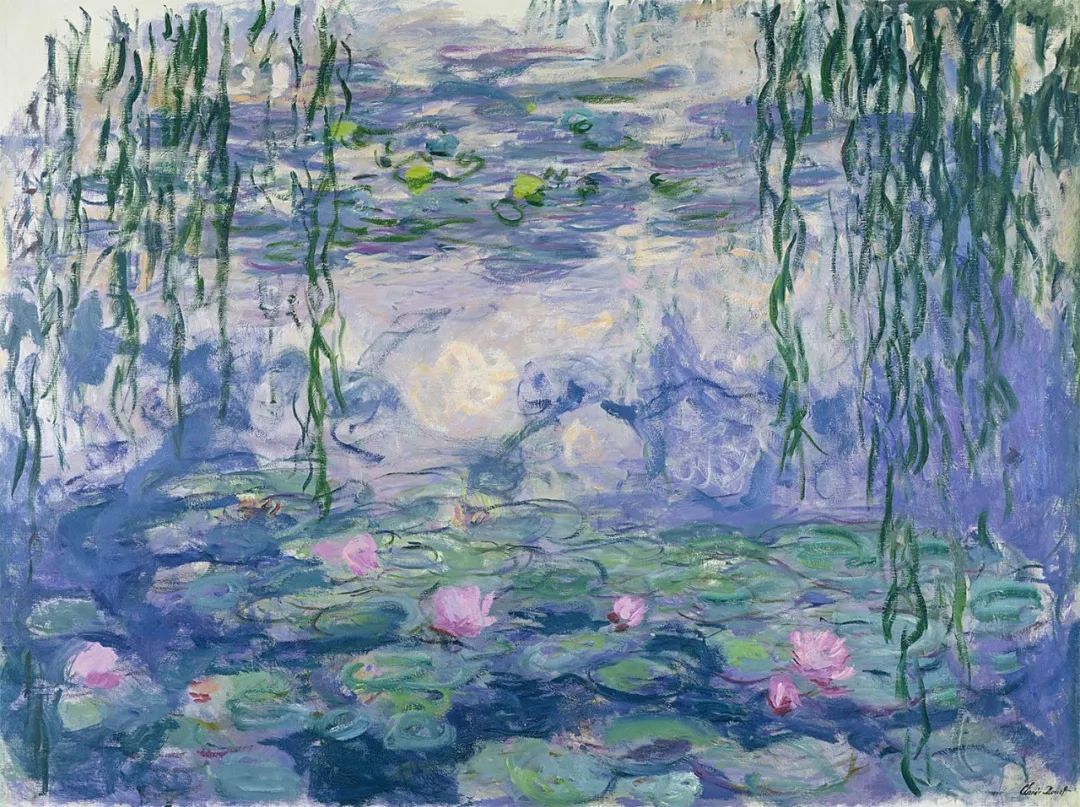
"I wear myself out fighting the sun. The sun is so good here! It is necessary to paint here with gold and precious stones. It is wonderful." - Oscar-Claude Monet Claude Monet)
INFJ – Odilon Redon / original name: Bertrand-Jean Ray (Odilon Redon)
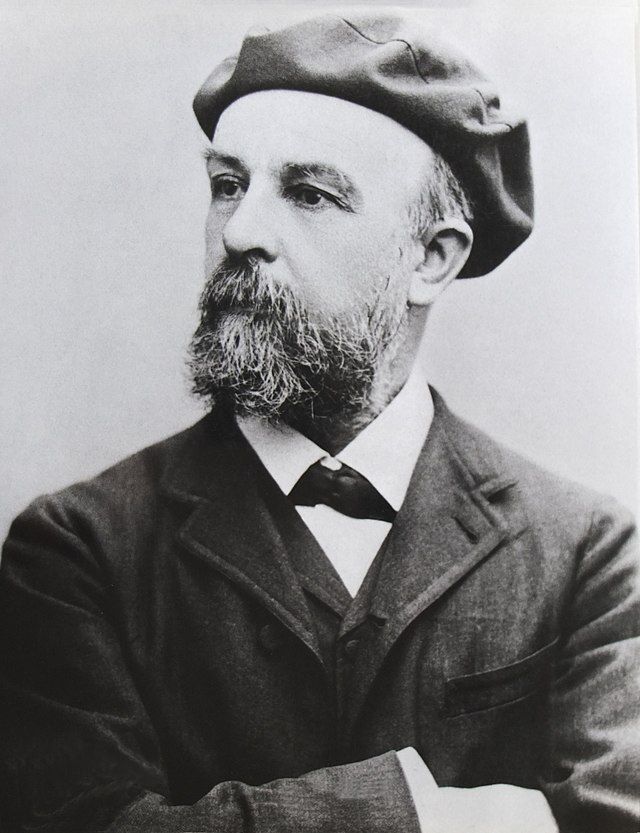
Personality characteristics: INFJ is the "protagonist" personality, creative, gentle and loving. INFJ's personality is very introverted, a little not good at communication, prefers to be alone, but is delicate, careful, also knows how to observe words, thinks about others, can tolerate other people's bad emotions, can empathize with others, and be considerate, so he is a person. good listener. INFJs are usually introverted but highly sensitive to the feelings of others. They are usually idealistic, with high moral standards and a strong focus on the future.
Odilon Redon, born in Bordeaux, France, is a French Symbolist painter and printmaker. He was also a leading figure in the Symbolist school of painting at the end of the 19th century. Because of the withdrawn personality of Lei Dong in his boyhood, he likes to imagine alone. He believed in exploring higher states of consciousness and he was able to do this by painting or painting his dreams, his "monsters" and his abstract thoughts. The symbolic imagery of his imaginative paintings is a perfect and typical example of your introverted intuition-driven artist.
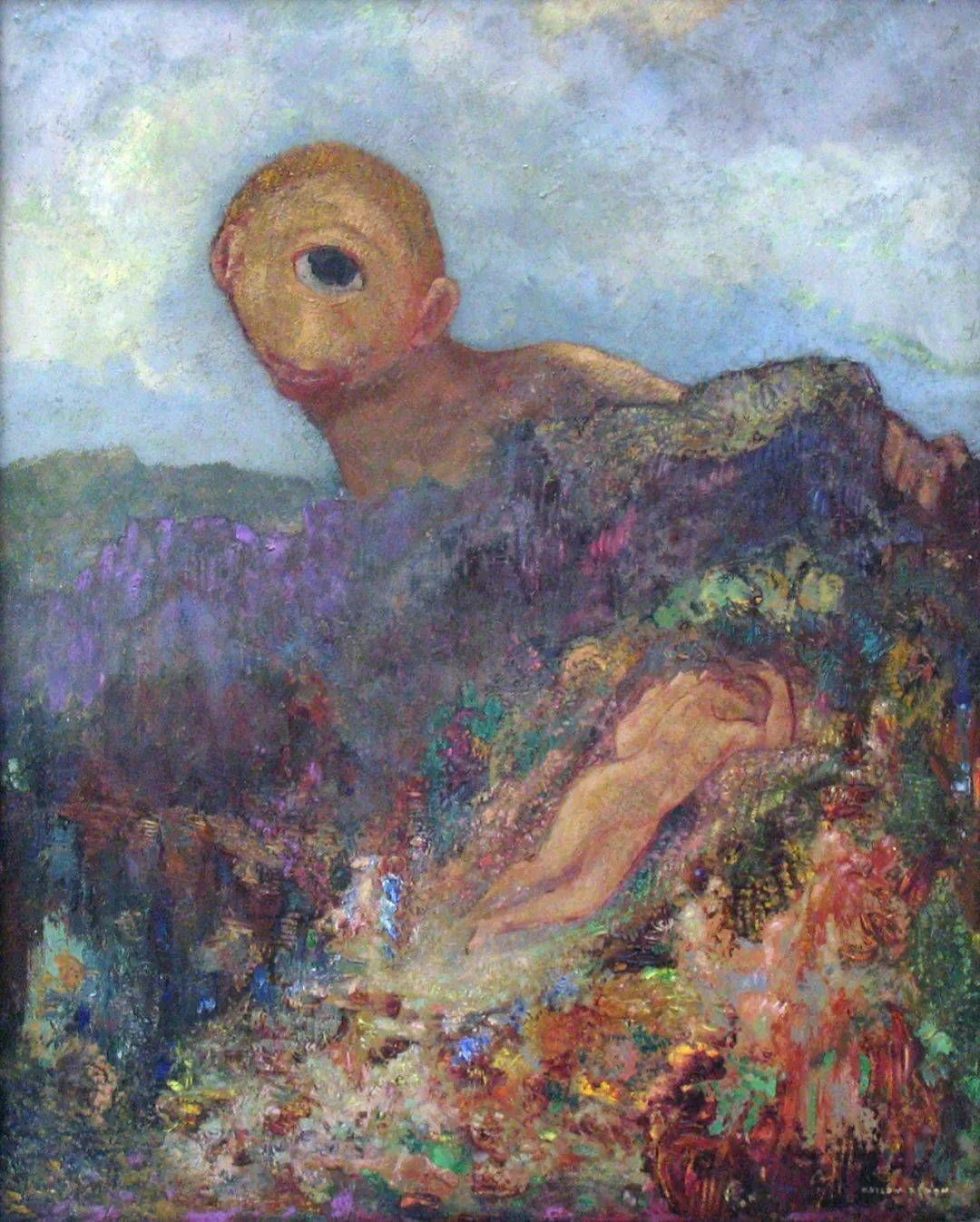
His aesthetic ideas mainly come from the works of symbolist writers and poets such as Mallarmé . Aesthetically, he advocates the use of imagination instead of relying on visual impressions. His painting "The Cyclops" In ancient Greek mythology, the Cyclops had a huge round eye, would graze, and cannibalize each other; Redon did a lot of research on the Cyclops, and his painting In the middle, under the shadow of the mountains, the giant looked at his lover, surrounded by a lot of fake flowers. In the exploration of color, shape, light and shadow, the painter expresses the fantasy and illusion of the dream .
"Nothing in art can be achieved by will alone. It is achieved by submitting to the subconscious." - Odilon Redon
INTJ – Arnold Böcklin
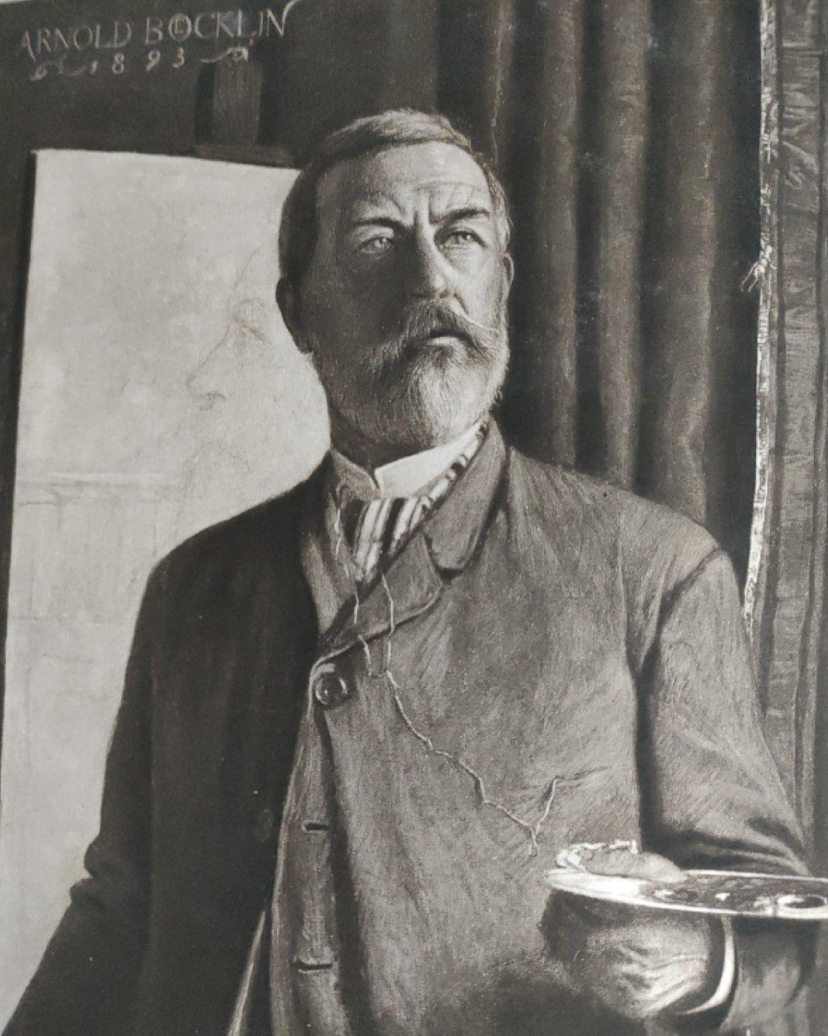
Personality Traits: Known as "architects" and "planners", INTJs are stubborn perfectionists who have extremely high demands on their own and others' abilities and performance, and will eliminate all unfavorable factors that hinder planning. People with this personality are highly analytical, creative and logical. They are both fanciful idealists and caustic cynics, all because of their insane wisdom that nothing is impossible with hard work and a plan. He tends to gain energy through thinking and being alone. Since every plan is well thought out, once you start doing something, it will follow through until it's perfect.
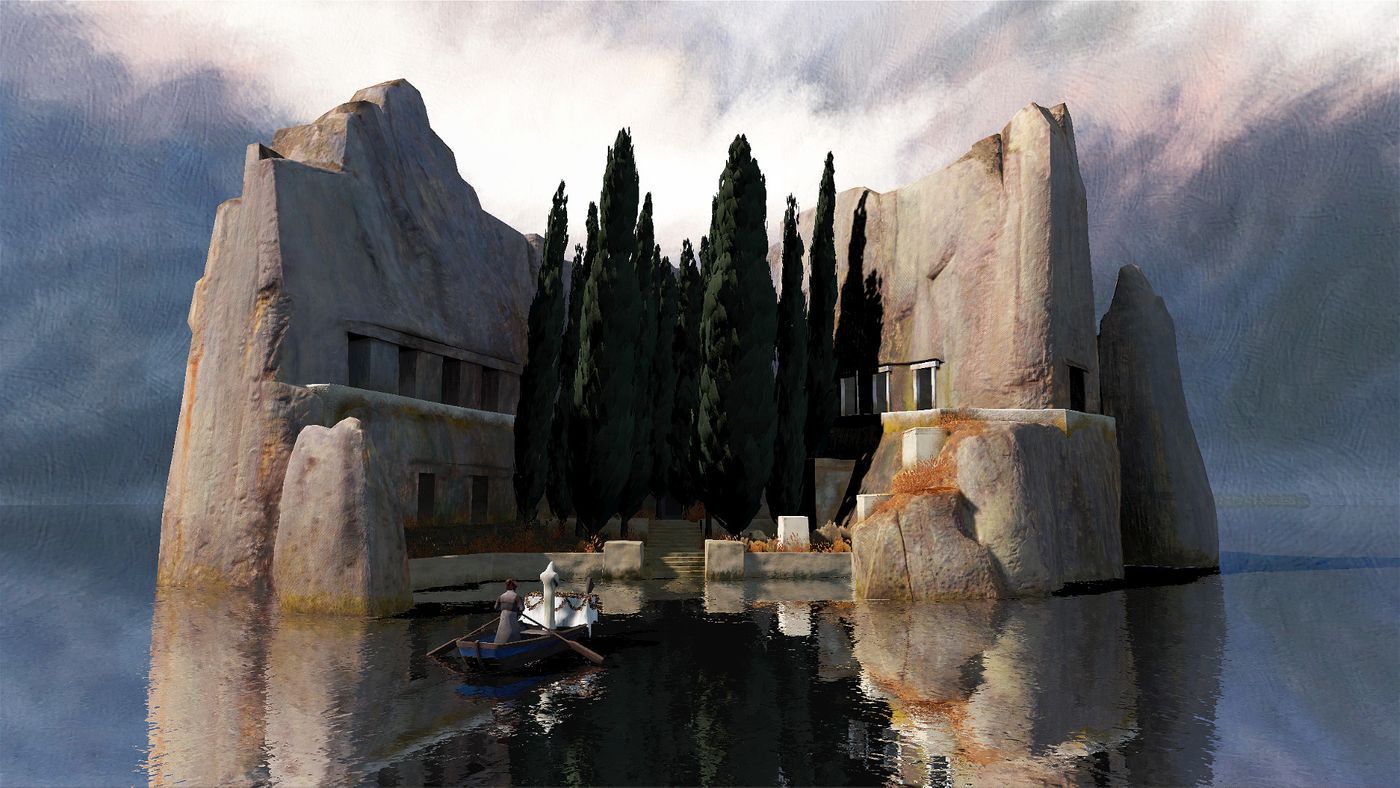
Arnold Böcklin was a Swiss Symbolist painter. Bocklin was a unique, proud, and somewhat eccentric artist who once played flying in his garden (as did Leonardo da Vinci) .
He doesn't like to name his work. He once said: A painting should make people think and move, just like poetry and music can bring people's feelings, painting should be able to penetrate people's soul like music , otherwise, it is just a stupid handicrafts. Bocklin praised poetry, his works give people a poetic feeling, not leisurely pastoral songs, but inspirational, mystic poetry. Bokrindo draws material from myth, he loves nature and worships the power of nature. His work is a perfect combination of natural force and fantasy.
Becklin's most famous work is his "Island of the Dead" series, painted in the atmosphere of the Florentine English Cemetery where his youngest daughter is buried. His works are full of mystical and fantasy atmospheres, but they are filled with classical architecture, showing death and mysterious and melancholy scenes.
ESFJ – George Hughes
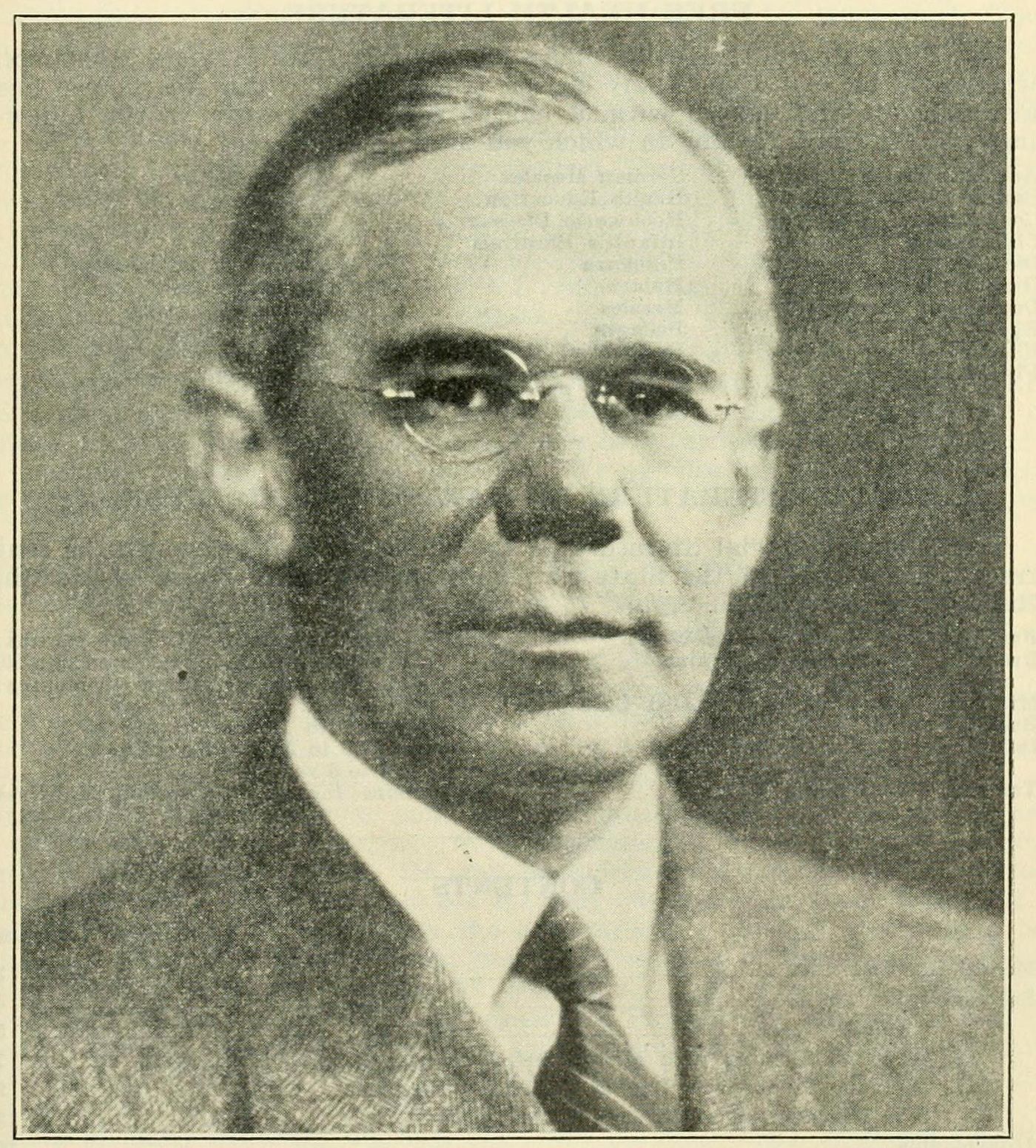
Personality Traits: ESFJs are "Archon" personalities, "Archons" are altruists who take their responsibility to help others and do the right thing extremely seriously, and they gain energy from their interactions with others. The "consuls" support authority and rules, rather than deriving moral standards from philosophy and mysticism. They care more about tangible, tangible things, such as improving social status and observing other people's actions.
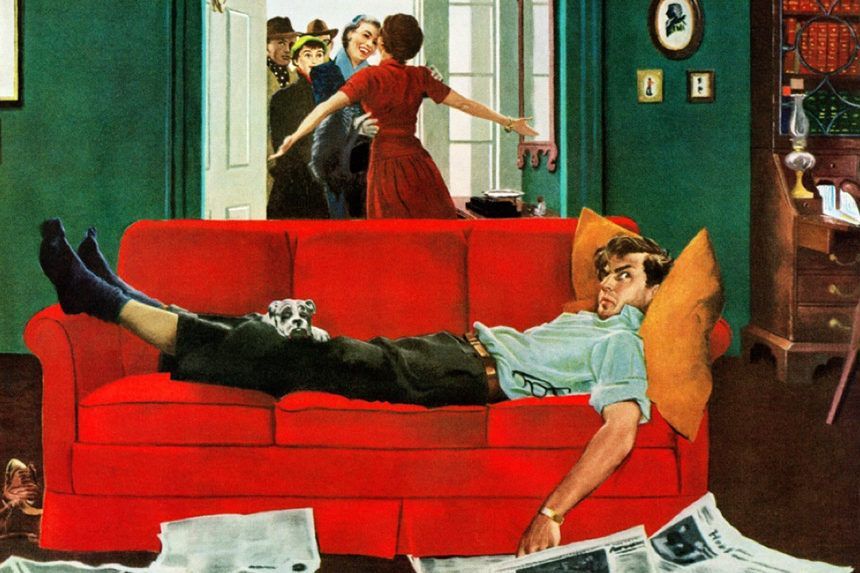
George Hughes was born in 1907 in New York, the center of twentieth-century art and advertising. His first job was illustration for some of the most famous magazines in the fashion industry, including works for Vanity Fair and House & Garden . He is a person who loves community and traditions. When photography took the country by storm, he painted a humorous and witty atmosphere with his brush, making the figures and backgrounds blend perfectly, capturing the family life of the middle class in the United States in a smart and interesting way. Hughes knew how to capture a moment in an idyllic American landscape, and his work was realistic, built around tradition, community , and perfectly captured and empowered many of the feelings and emotions of people in the context of that particular era at the time.
ESTJ – Emanuel Leutze
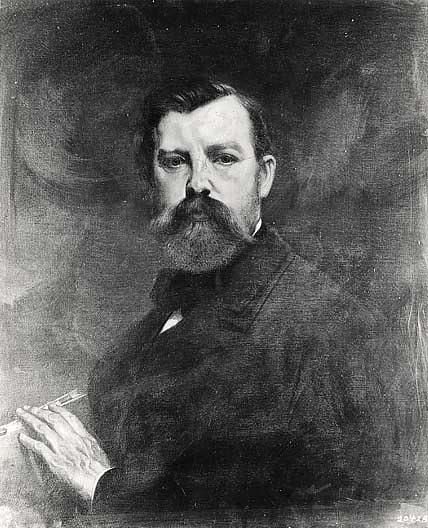
Personality Traits: ENTJs are the "commander" type who are natural leaders who are very good at thinking strategically and thinking the big picture. People with this personality type are naturally charismatic and confident, they are confident and will make sure things go smoothly according to the rules. They will both firmly believe that with enough time and resources, there is no goal that cannot be achieved. ENTJs are energetic, outspoken strategists. They are quick and keen to spot opportunities and act immediately. They are willing to share their views with others without reservation.
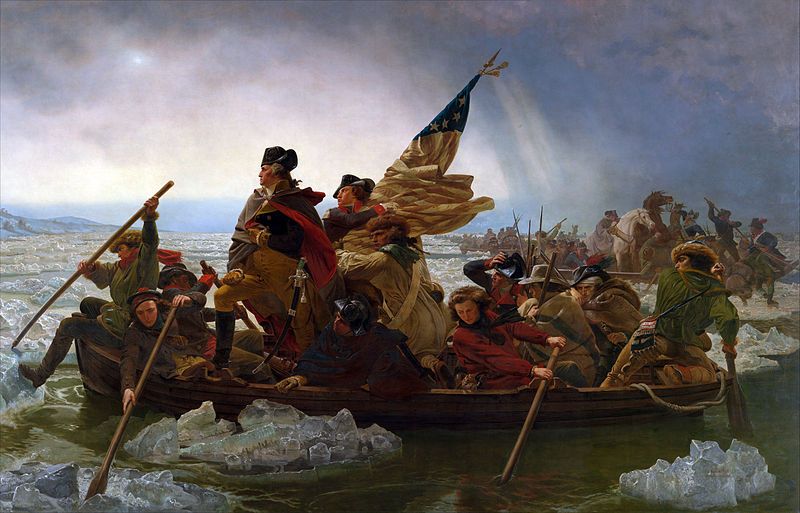
Emanuel Leutze was a German-born American history painter. German-born Emmanuel Leutz grew up in the United States and returned to Germany as an adult. A determined, responsible man, he sold his paintings from the age of 14 so he could support himself after his father died.
His painting "Washington Crossing the Delaware River" is one of the most popular and widely produced paintings of the event in American history. This painting depicts Washington crossing the Delaware River during the American Revolutionary War. On Christmas Eve 1776, George Washington led 2,400 soldiers to cross the Delaware River and attacked the Hessian soldiers employed by the British Empire stationed in Trenton. , a turning point in the Civil War.
He was inspired by this event during the 1848 Revolution and began to conceive this work, he hoped to encourage liberal reformers in Europe through the American Revolution, so Leutz hired his American friend as a model for the characters in the painting, Like Col. James Monroe holding the flag, and Gen. Nathanael Greene leaning against the edge of the ship, who finally completed his first work in 1850 . Leutz painted his first version in 1849, but a fire in 1850 destroyed it in his studio; although it was later restored and acquired by the Bremen Museum, it was destroyed again in 1942 A raid bombing in 2009. In 1850, Leutz began a second work on the painting, which was exhibited in New York in October 1851, and was visited by more than 50,000 people. In 1853, Marshall O. Roberts bought it for the then sky-high price of $10,000. After changing hands several times, it was finally donated to the Metropolitan Museum of Art in 1897 by John Stewart Kennedy. to date. This masterpiece is regarded as a symbol of the American people's resistance to setbacks. It occupies the entire wall of the exhibition hall and can be called the treasure of the Metropolitan Museum.
ESFP – Frederic Remington

Personality Traits: ESFPs are "performer" personalities who are playful, cynical, and energetic by nature. ESFPs are often described as spontaneous, resourceful, and outgoing. They like to be the center of attention and don't like to impose their will on others. They learn more by doing than doing research or reading, so they tend to dive headfirst into something and learn by interacting with the environment. They live in the moment, are very practical, and at the same time dislike routines and desire to go with what they feel.
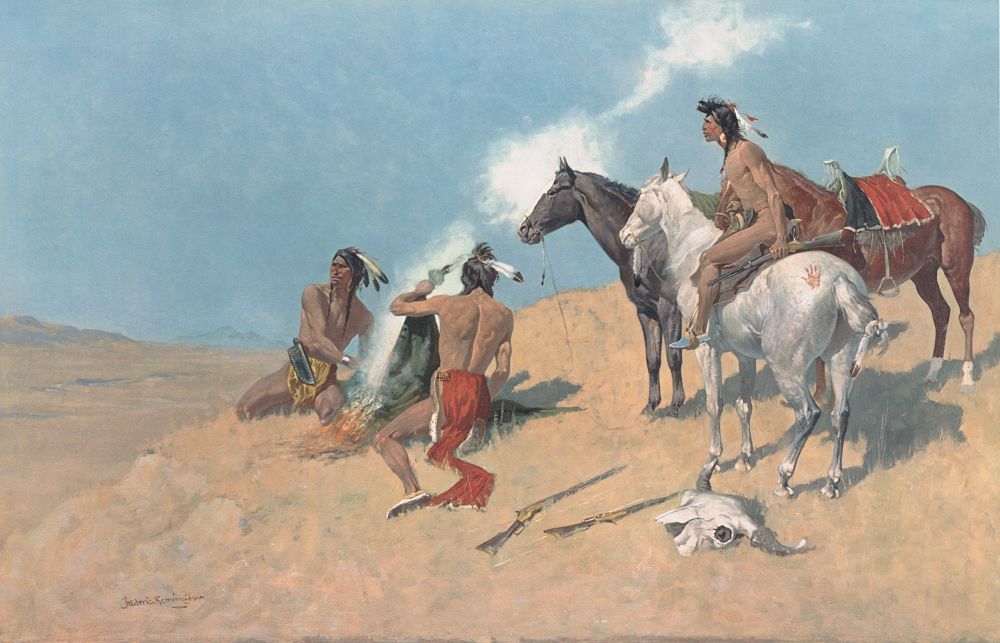
Frederick Remington was born in Canton, New York in 1861. He is an American artist, illustrator, painter sculptor and writer specializing in depicting the American West. Remington's father was a colonel who served as a Union officer in the American Civil War. Remington's great-grandfather, Samuel Bascom, was a saddle businessman, and the Remingtons were excellent riders. Most of his works take the American Old West as the background or theme, depicting characters such as hunters, Native Americans, cavalry, scouts, etc. The cowboy images he portrayed later became the symbol of the American Old West . Known as the "Remington School" because his images of early American cowboys have almost become popular, his style is naturalistic and sometimes impressionistic.
Remington was one of the first American artists (along with Thomas Eakins) to show the true gait of a horse , as evidenced by the famous serial photographs of horses by Eadweard Muybridge . Previously, horses were often depicted with all four legs pointing out when fully galloping. But Remington 'intercepted' the state of the horse in motion in his works, similar to the momentary movement of the horse while running captured by the camera, which was also imitated by later Western artists, and the galloping horse also became Remington The iconic theme of the work . In September 1893, Harper's Monthly published his collaboration with Owen West, " The Evolution of the Cowpuncher," the first presentation of a cowboy myth in American literature, which subsequently gave birth to The Evolution of the Cowpuncher. An entire genre of Western fiction, film, and drama .
"Art is the devil of the mistress, and if, in the early days, she didn't even succumb to my way of thinking, I have persevered and will continue to do so. - Frederic Remington
ESTP – John James Audubon
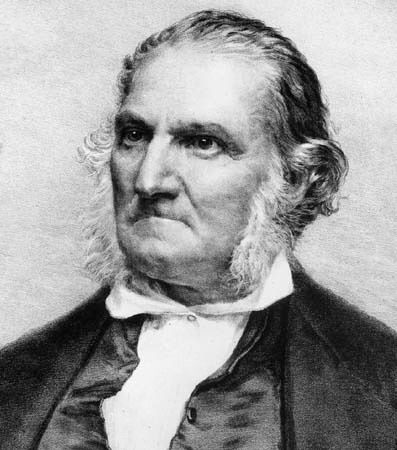
Personality Traits: ESTPs are action-oriented and dramatic. They are outgoing and enjoy spending time with a wide range of friends and acquaintances. They are interested in this now, and some may pay attention to details rather than having a broader view of things.
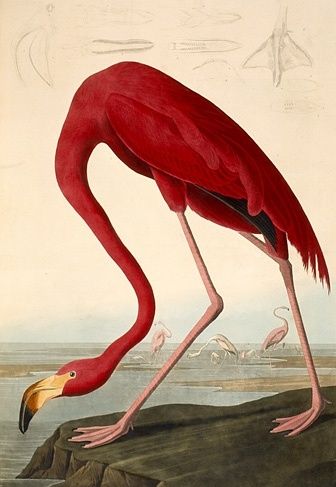
John James Audubon, born in Haiti, was an American ornithologist, naturalist, and painter . He has published two sketchbooks , Birds of America and Quadrupeds of America . The most famous is the illustrated book "Birds of America" (Birds of America) published in 1827. It not only has exquisite pictures, but also has artistic value and more contributions to the field of science. The greatest and most influential work of the 19th century, in this book of birds, Audubon depicts and collects 25 new species. Audubon's work had a profound influence on later generations of wildlife painting.
One of Audubon's most famous works is "American Flamingo", he depicts a flamingo standing on one foot in water, its neck is gracefully bent, showing a natural relaxed posture, making the flaming The form of the bird is lifelike and not rigid at all; while the background depicts the marshland where the flamingo lives, and he deliberately painted the background lightly to accentuate the flamingo's characteristic pink color.
"I never gave up listening to the birds singing, observing their unique habits, and trying my best to portray them." —John James Audubon
ISFP – Winslow Homer

Personality Traits: ISFPs are "explorer" personalities and are born artists . ISFPs are uniquely gifted in artistic creation. They not only like to enjoy beautiful things, but also are good at creating beautiful things. They don't like publicity, and they express their deep emotions more through actions and works than words . They are peaceful, humble, sensitive, patient, flexible, a little cunning and sullen, have strong personal ideas and their own values, and are unwilling to dominate and control others. They are interested in what they know and feel directly from their experiences, and are often artistically and aesthetically gifted, seeking to create a beautiful and secluded environment for themselves.
Winslow Homer was born into a middle-class family in Boston, USA. An American landscape painter and printmaker, he is considered one of the most important American painters of the 19th century. Homer inherited many of his mother's personality traits, including quietness, firmness, succinct speech, sociability, and a lack of humor, but also inherited a talent for art. Homer did not come from an art class, but was mainly self-taught. The first important job in his career, advertising illustrator, was for the then newly founded "Harper's Weekly" (later renamed Harper's Magazine).
Although his works after middle age may not easily resonate with non-American audiences, he can feel a kind of concern for human nature in his works . These paintings, which seem to depict the general style of life in the United States, actually vaguely express and emphasize the universal value of human beings, that is, all human beings are born equal and human dignity .
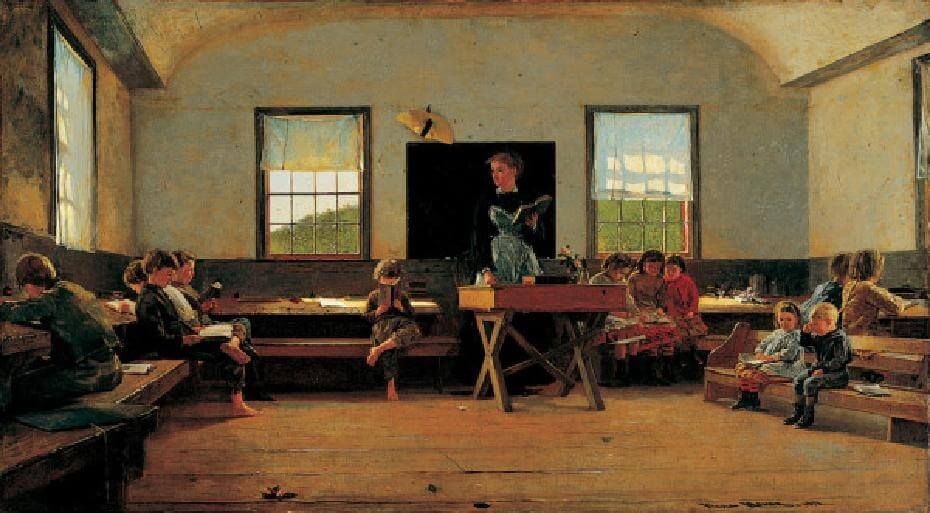
He jumped out of the traditional theme of other painters preferring ladies and rural women as the protagonists. The "Country School" painted in 1871 depicts the ordinary life scenes of the female teacher teaching in the rural school, showing him The attention to figures such as professional women and children , but these ordinary people were not the group that was noticed by the society at that time, let alone the subject of creation. The characters in the painting, whether it is the female teacher or the children in the class, all show a rare and ordinary temperament against vainness. Some art critics believe that the women in Homer's works are no longer dolls showing off millinery, but strong, fearless, healthy wives and mothers to men.
"When you paint, try to let go of what you see. Because no matter what, other than what you see, what you want to express will naturally emerge in the picture." - Winslow Homer
ISTP – Georgia O'Keeffe
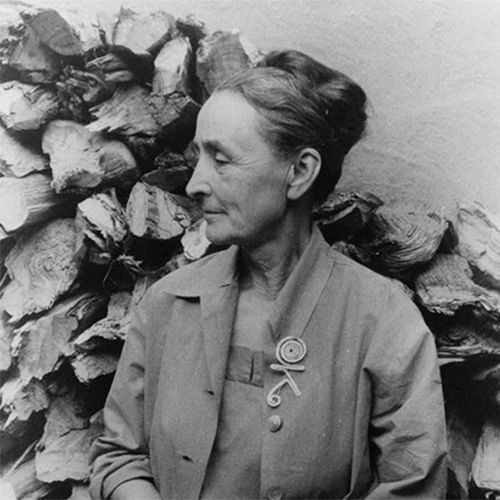
Personality Traits: ISTPs are "connoisseur" personalities, they like to explore things with their hands and eyes, they perceive and experience the world through calm rationalism and spirited curiosity. People with this personality are natural makers who zip through different projects, take pleasure in creating useful, plentiful products, and learn from the outside world in the process. ISTPs like to have time to think for themselves, and are very alone. Love the action, new experiences, hands-on activities, and the freedom to work at your own pace.
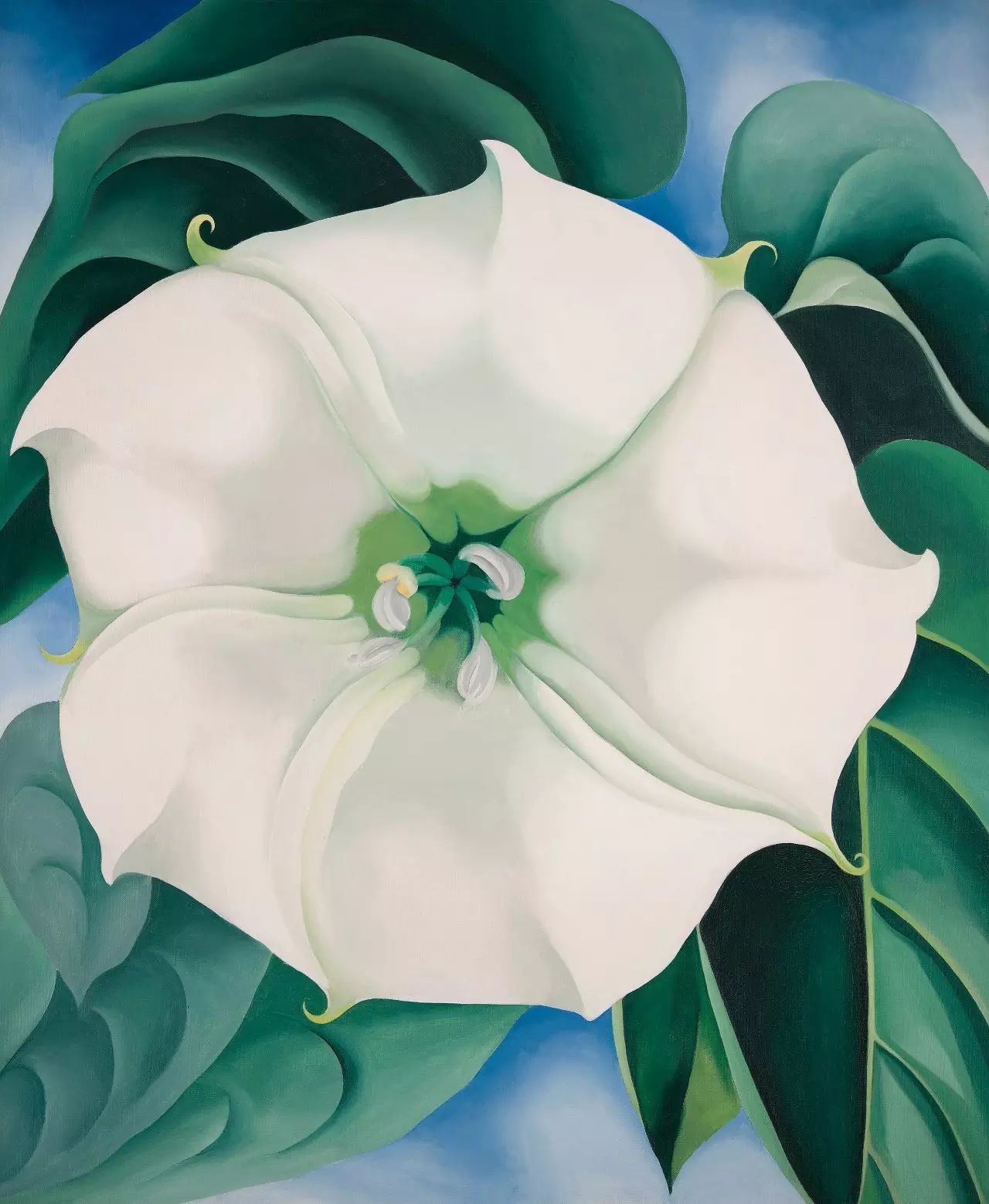
Georgia O'Keeffe is an American artist, O'Keeffe is known as the American Picasso. In the 1920s, the Art Deco style prevailed, and O'Keefe's works became the classic representative of American art at this time. She is known for being down-to -earth, straightforward, and unsentimental . She enjoys working alone, playing with her material, improvising, and quickly creating new and unusual ideas. From 1924, she began to use "enlarged flowers" as the theme, using semi-abstract and semi-realistic techniques to depict flowers from a microscopic perspective. It is said that some art critics believe that O'Keeffe's flowers symbolize the female reproductive organs, revealing the consciousness of women. She later said that this was not the source of her creative inspiration, and she would not distort the original intention of her painting because of this avant-garde and advanced theme.
In 2014, one of O'Keeffe's most iconic flower works, "Mandala/White Flower No. 1" , set a world record for a female artist's work at Sotheby's auction price of $44 million, which was three times higher than the estimate. times as much. Ironically, however, she once said that she wanted to be called a "painter" rather than a "female painter" .
"When you look carefully at the flower you hold in your hand, that flower becomes your world in that instant. I want to pass that world on to others. People in big cities are mostly in a hurry and don't have time to stop. Look at a flower. I'm going to force them to see it, whether they want to or not." -Georgia O'Keeffe
ISFJ – Norman Rockwell
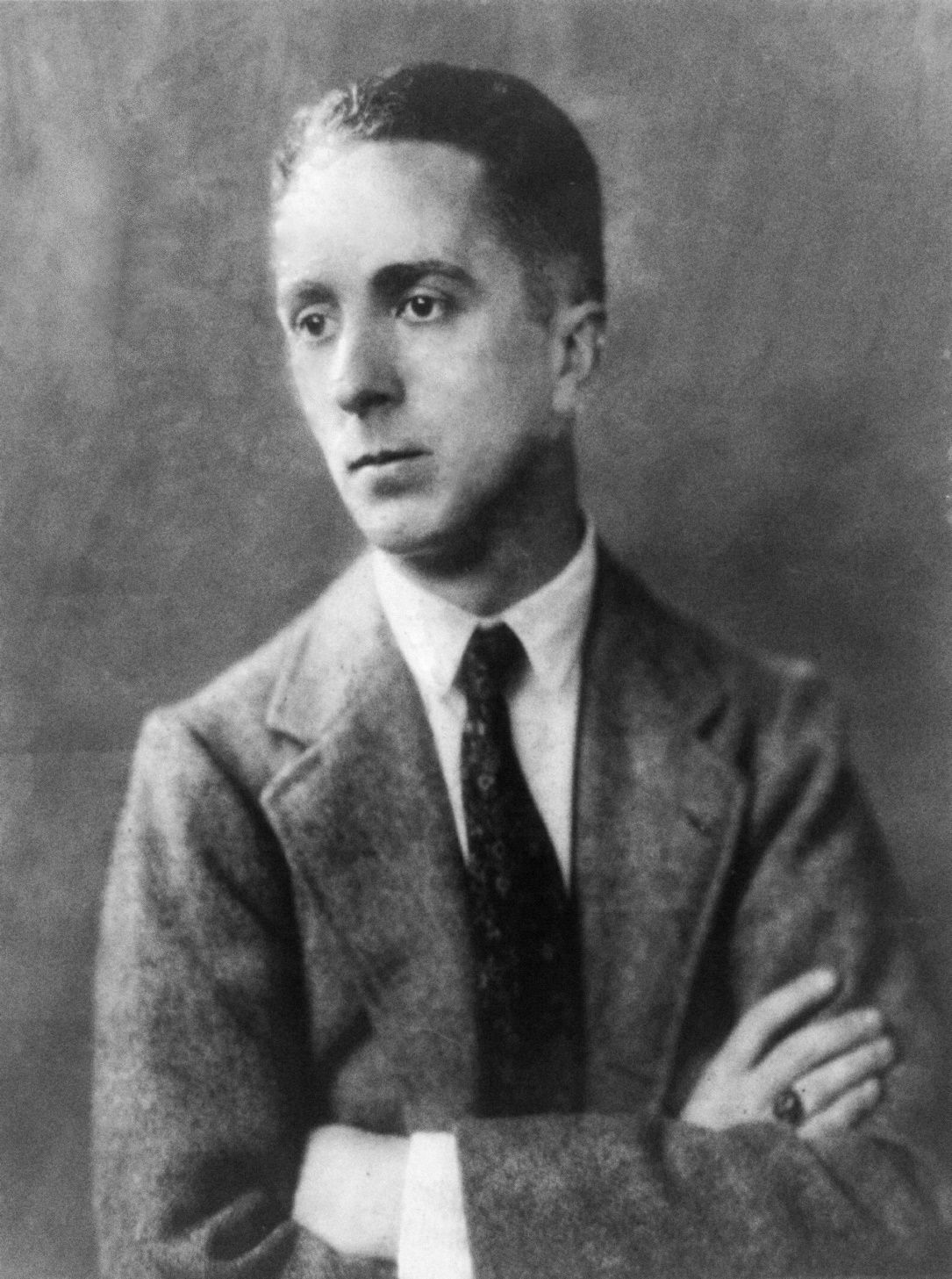
Personality Traits: ISFJs are "guardian" personalities, people with their personalities tend to be conservative, enthusiastic, and responsible. Very caring about the feelings of others, when it comes time to protect their family or friends, they can become very tough; although quiet and introverted, they have good social skills and strong social relationships; With understanding and respect, they are willing to accept change.
Born in New York City, Norman Rockwell was an American illustrator and painter who captured everyday life in nostalgic images of small-town America. He tells fantastic stories through pictures and has deep insights into human emotions. Rockwell is known as a restrained, introspective man who infuses his own values into his work. He is very observant and likes to capture their true emotions and personalities in each portrait. ISFJ artists are easily aware of each person's unique details, and they can see the uniqueness of other people's life experiences in everyday moments.
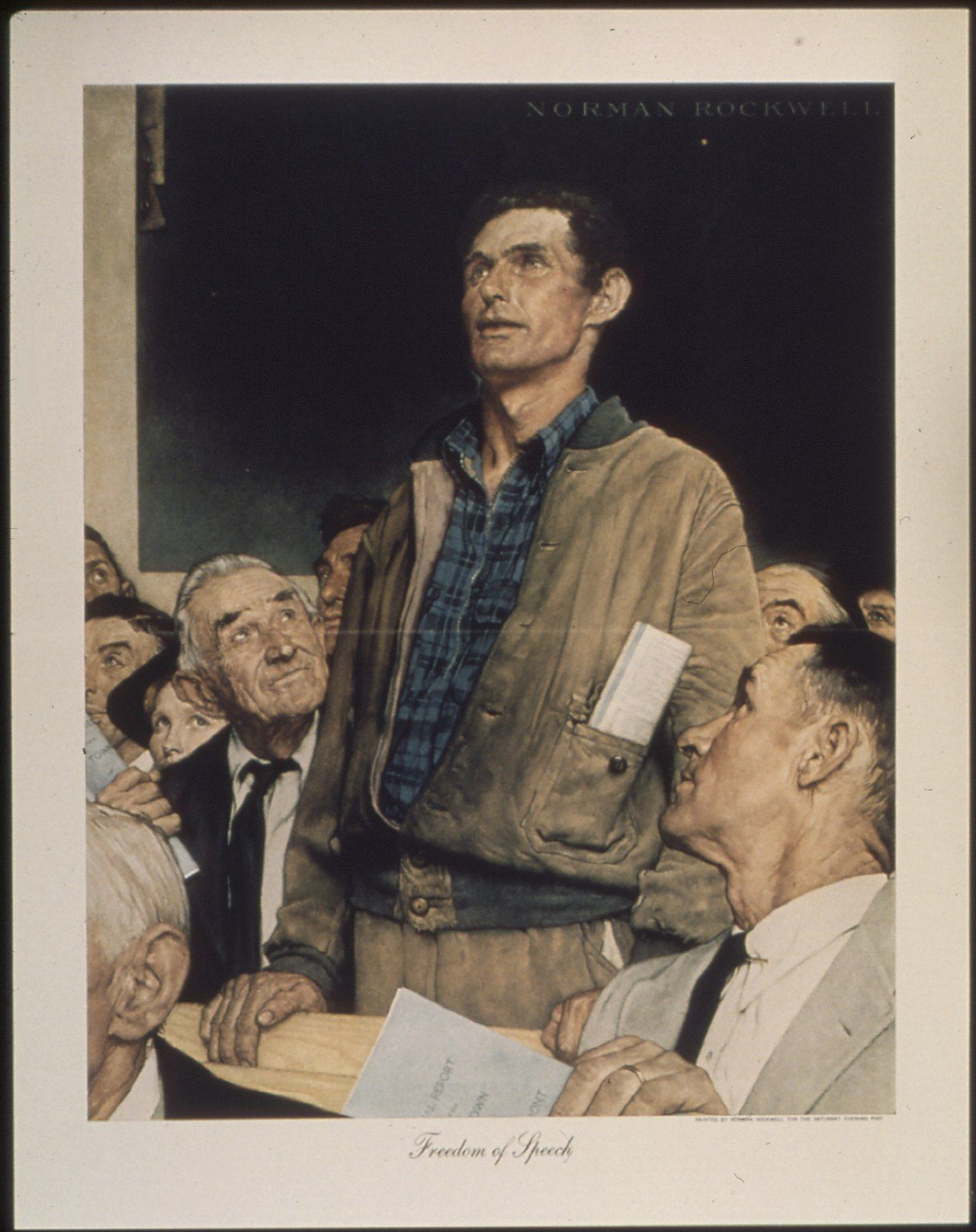
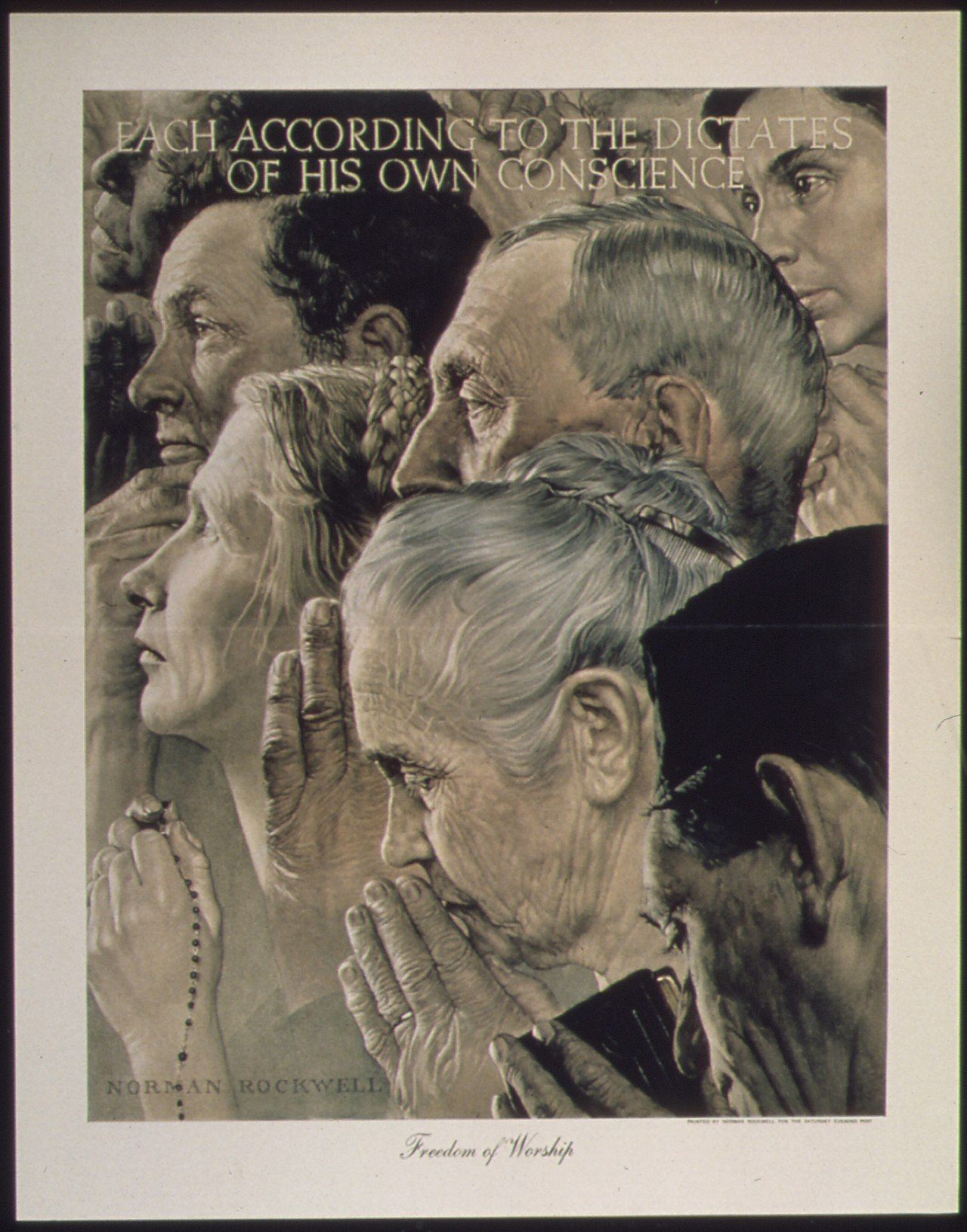
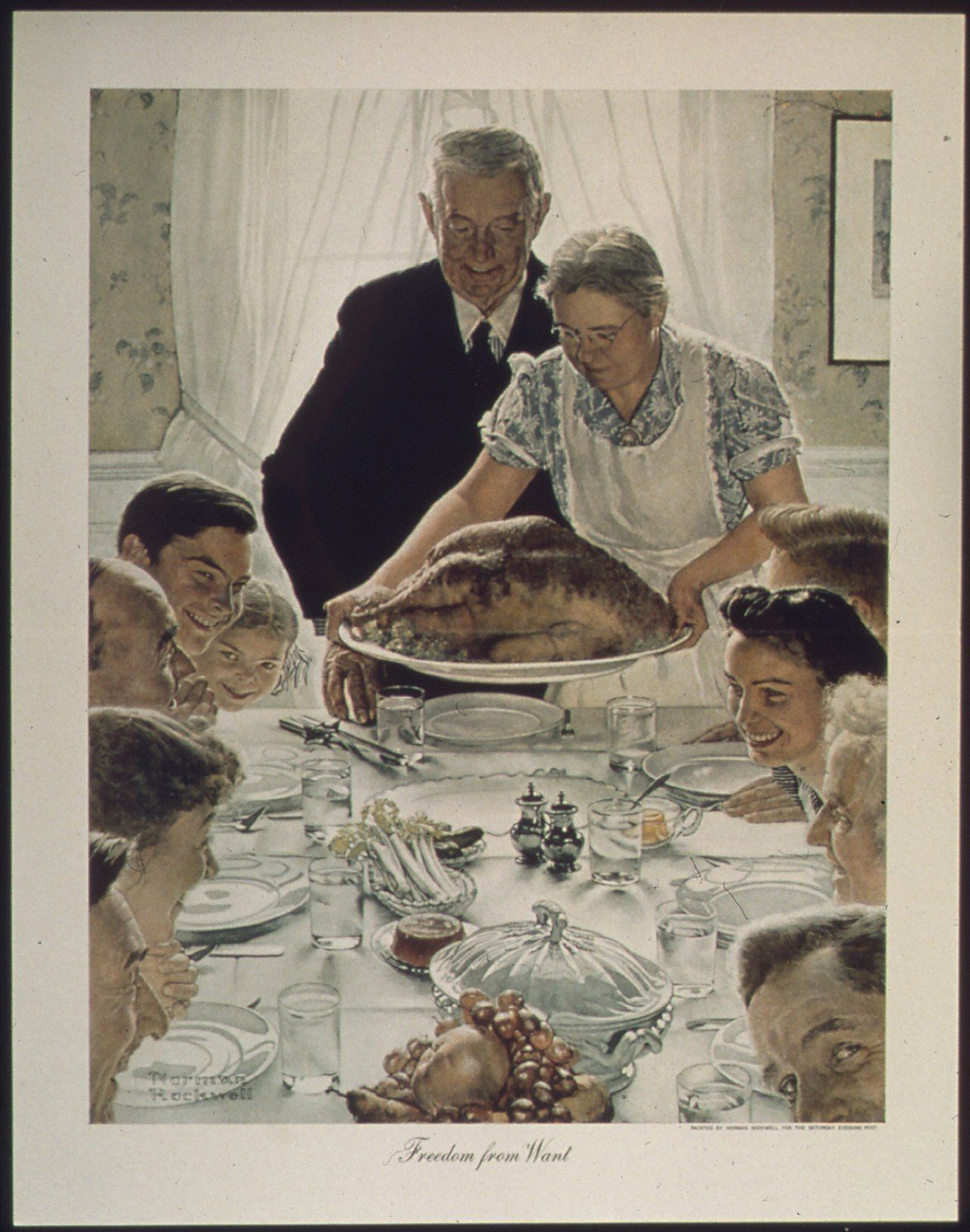

Rockwell is best known for Four Freedoms and Rosie the Riveter . During World War II, in order to join the army, he ate doughnuts, bananas and drinks overnight, and finally reached the standard weight, but he was assigned as an army painter in the army. As a result, he completed his world-famous work - the "Four Freedoms" series within seven months. President Roosevelt's global human rights speech: "Man has four freedoms: freedom of speech, freedom of belief, freedom from want, and freedom from fear." This series was then published by the famous "Saturday Evening Post" in the United States, and the US Treasury Department held a touring exhibition of original paintings to promote the US War Bonds (War Bonds). Norman Rockwell lost 15 pounds for this series.
"I also talk while sketching, to keep them away from what I'm doing so I can get the most natural expression from them. Also, talking helps gauge the subject's personality so I can better Figure out how to portray him". —Norman Rockwell
ISTJ – Edward Hopper
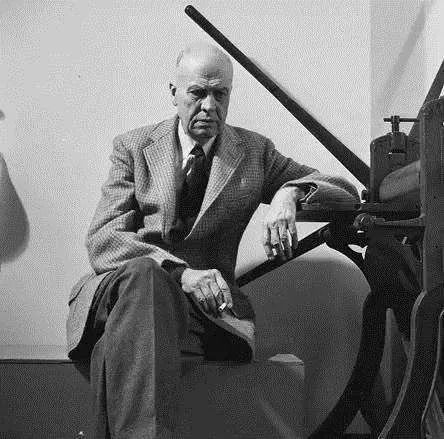
Personality Traits: ISTJs are the "scrupulous examiner" type, they are extremely rigorous, extremely self-disciplined and extremely reliable. They do not like to make assumptions, but analyze their surroundings and take the most practical and effective action based on the facts. "Poker face" is a common expression feature of ISTJs. There is no emotion or anger. When you meet them for the first time, you will feel that there is a statue in front of you, and they have a strong memory and thinking about details, although they Always traditional, conservative, and likes to state things clearly and clearly;
Edward Hopper was a master American painter known for depicting the lonely landscapes of contemporary American life. Hope was born in the home of a wealthy textile merchant in Nyack, New York, and is a typical bourgeois family, so his painting themes have continued the life of the American urban middle class. He traveled to Europe three times, mainly to study the emerging European painting style, but he uniquely abandoned the abstract trend of the Cubism school at that time and moved towards the idealism of the realistic painting school.
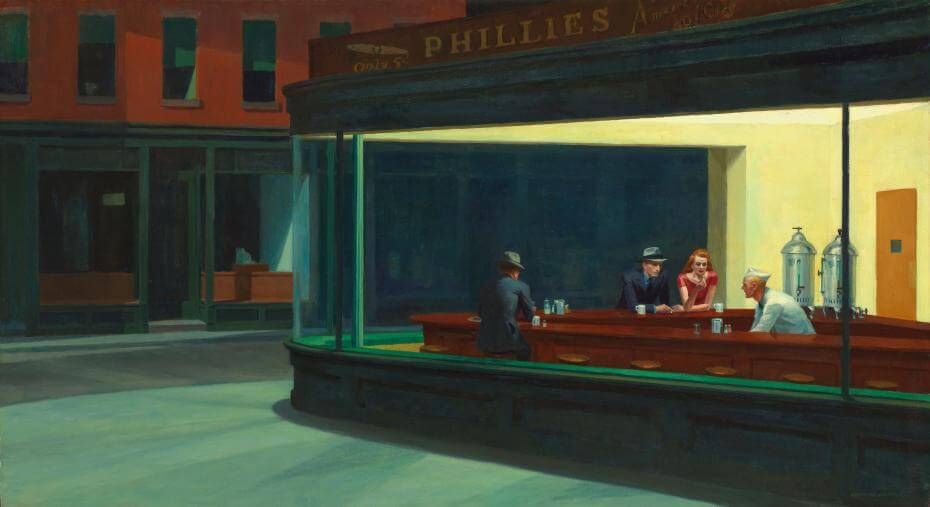
In 1942, his most famous work "Nighthawks" - Nighthawks attracted the world's attention, this painting shows a few lonely customers sitting in a 24-hour restaurant in a city, the fluorescent lights in the restaurant are very bright, and the outside is very bright. There are light and shadows cast by large transparent glass windows on the street. It is dark above, and it can be seen that it is the atmosphere of midnight. The customer in the center of the painting, with his back to the audience, sits on the round stool in front of the bar, which makes people wonder why at this time. , These customers are sitting alone in the small restaurant. The alienation and loneliness in Hope's work is palpable, but the popularity of these paintings is equally astonishing today. Needless to say, a large number of original reproductions have been sold, and his signature style of large color blocks and thick lines, coupled with simple composition and bold use of light, has made his style fascinated and imitated by excellent film directors and photographers. , and even influenced the film director Hitchcock . For example, the buildings in Hope's paintings can be found in Hitchcock's films - most notably the Bates Hotel in "Psycho" and the roadside villa in the painting "House by the Railroad". same.

"Great art is the outward expression of the artist's inner life." -Edward Hopper
Do you have a favorite artist on this list? Do you have a favorite artist that really impressed you? Please let me know in the comments~
Like my work? Don't forget to support and clap, let me know that you are with me on the road of creation. Keep this enthusiasm together!

- Author
- More